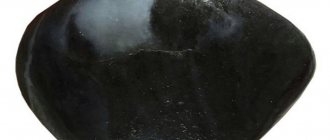The history of jewelry
Jewelry has always been in human life and has gone through its development path of a thousand years.
No one knows exactly when the first jewelry appeared. When carrying out various excavations, it turns out that jewelry dates back to the earliest eras in the development of mankind.
Shellfish shells were found in Morocco. They were thought to be part of a necklace that was approximately 110,000 years old. In Asia Minor, the remains of a woman who lived during the Paleolithic era were found. She wore a large number of beads and bracelets, so she can be considered a fashionable lady of that time.
Our ancestors decorated themselves with various objects: shells, flowers, fruit seeds, teeth, bones and even animal horns. The highest priority was given to stones processed by nature itself - quartz, silicon, jade, etc.
The first people to use jewelry were men. They wore them as amulets and amulets that protected from evil spirits. It was also possible to understand from the decorations who in the tribe was the leader, hunter or warrior.
Approximately five thousand years ago, the first jewelry appeared that was similar to what we now understand by this word. Egypt, Italy, China were the first to give modern people the opportunity to emphasize their beauty with the help of jewelry.
Gold, which is one of the most precious metals, marked the beginning of a new history and discoveries in jewelry.
In Ancient Egypt, gold processing became a craft, and goldsmiths began to appear.
They gave rise to the appearance of gold jewelry in the form of rings, chains, and bracelets. Craftsmen used stones such as turquoise, lapis lazuli, and chalcedony in their products. Also, in addition to external beauty, gold jewelry gave its owner a certain status and position in society.
In addition to the ancient Egyptians, the Incas in Peru and the Aztecs in Mexico also contributed to jewelry. Jewelry was also mentioned in the New Testament, where the kings of Judah wore gold bracelets as part of their clothing.
In ancient Rome, craftsmen decorated silver and gold items with precious stones such as diamonds. The upper strata of society wore jewelry made of gold, while city residents (merchants) wore jewelry made of silver. Slaves were also allowed to wear jewelry, but made of ordinary metal.
The Middle Ages is a new stage of development in jewelry. At that time in Europe, workshops for jewelry were located on the territory of monasteries. All efforts went into making religious objects.
During the Renaissance, jewelry making became one of the areas of artistic art. Famous artists of that time were also skilled jewelers.
The 17th – late 19th centuries are considered to be a real breakthrough in jewelry art. The products lost their symbolism and acquired the status of jewelry with decorative trim. The first schools of jewelry art began to open. At that time, jewelers were inspired by beautiful ladies to create their masterpieces. Of all the stones, preference is given to diamonds, which, one might say, become a symbol of every social event.
Baroque, Rococo, Classicism, Empire... These styles in art replaced each other, leaving behind such different, but equally magnificent jewelry, which captured not only the skill of the jewelers, but also the spirit of the era itself.
Jewelry has come a complex way from symbolic amulets and amulets to magnificent jewelry, from which we now take great pleasure.
Ancient Greece
Ancient jewelry art in Greece was distinguished by great grace and subtlety. The favorite technique of the masters was filigree - making a complex pattern from thin gold or silver wire soldered to a metal background. Most often, floral designs were used: images of flowers, leaves, vines.
Of the materials, gold was the most valued - the ancient Greeks attributed magical properties to this metal. In general, jewelry emphasized the status of the owner, so the finer and more complex the work, the more expensive it was. Rich Greek women wore a wide variety of jewelry. Elegant items for the hair and neck, as well as bracelets, were held in high esteem. The only exception was Sparta - local women did not wear lush and fancy jewelry, preferring simple metal jewelry.
The twentieth century
In the last century, a large number of trends were formed in jewelry. In the first decades, the dominant style was Art Nouveau. In jewelry art, his influence was realized in the extreme complexity of the forms and ornaments of jewelry. Platinum, palladium, and anodized aluminum are actively used. Diamonds are becoming popular again. Costume jewelry is also becoming fashionable, the distribution of which was significantly influenced by the famous Coco Chanel.
In the war and post-war years, products become simpler, gold is often replaced by bronze. In the second half of the century, under the influence of nonconformist ideas, craftsmen began to use unusual materials in their work, previously unthinkable for jewelry: wood, plastic, steel and others. With the development of complex technology, jewelry appears with chameleon stones that can change color depending on temperature changes or the mood of the owner. Cultured pearls of various colors are becoming popular.
During the Soviet years, Russian jewelry companies produced mostly mass products. But at the end of the last century, modern masters decided to revive the guild of Russian jewelers in order to return the art of jewelry to its former glory.
European jewelry of the 18th century
In the 18th century, the dominant styles were Baroque and Rococo. This also applies to jewelry. Fancy, pomp and bright colors are becoming fashionable. At the same time, French jewelry occupies a leading position. It was then that jewelry acquired its modern look. Jewelry ensembles are gradually coming into fashion; large brooches are very popular among wealthy people. The most favorite stones are diamonds of yellowish, pinkish and bluish shades, and they are used in both men's and women's costumes.
Rus' in the XIV – XVII centuries
With the advent of the Tatar-Mongol hordes, jewelry making was forgotten for almost a century. Many craftsmen died or were taken away to work for the Horde rulers. Only towards the end of the 14th century did a gradual return to ancient art begin. Moscow is becoming the center of jewelry crafts, where the filigree silver technique is very popular.
In the 16th – 17th centuries, jewelry actively used enamel and gems. The jewelry of this period is characterized by richness, colorfulness and richness of colors. The stones are also distinguished by their brightness - sapphires, rubies, and emeralds are held in high esteem. This time is called the heyday of the blackening technique. Silversmithing centers were established in many cities.
Europe in the 19th century
In the middle of the 19th century, jewelry making became more widespread. At the same time, less valuable stones and materials began to be used: aquamarine, rock crystal, malachite, artificial diamonds. Jewelry art has also changed its general style - classicism is replacing rococo, and accordingly, jewelry is becoming more strict and carefully designed. Products with precious stones are gradually ceasing to be used in men's suits, but cane knobs and expensive snuff boxes are becoming fashionable.
Among the famous masters, one can highlight the court jeweler of Napoleon I, Martin Guillaume Bienne. In the 19th century, such world-famous houses as Cartier and Tiffany were born.
Jewelers of Ancient Rus'
Russian jewelry art has a great history. Modern archaeological excavations are evidence of this: the quality and subtlety of the work of ancient craftsmen amazes even now. The jewelry art of Ancient Rus' was influenced by Scandinavian, Eastern and Byzantine cultures, and at the same time inextricably linked with folk customs and traditions.
Craftsmen from all corners of Kievan Rus were fluent in the most complex techniques, including artistic casting, filigree and gold casting. Veliky Novgorod was famous for its jewelry made of precious metals. Kyiv jewelers processed gems with extraordinary skill. The most common decorations were the so-called temple rings, which were woven into the hairstyle or hung from headdresses. Women also wore a variety of bracelets and beads with pendants.
Rus' in the 18th century
In Russia in the 18th century, jewelry art flourished. This happened largely thanks to the reforms of Peter I. Since then, jewelry has been actively borrowing European trends, while maintaining its originality. Foreign masters often come to Russia. Among them is the famous Jeremy Pozier, who worked at court for thirty years and created true masterpieces of jewelry. His best work is rightfully considered the Great Imperial Crown, made for Catherine II. This unique product contains almost five thousand diamonds. Now this relic is carefully preserved by a unique museum of jewelry art - the Diamond Fund in Moscow.
In general, the use of gemstones becomes popular during this time. Sparkling, bright, superbly crafted and decorated, they perfectly complement and decorate the magnificent outfits of noble ladies and nobles.
Interestingly, the word “jeweler” itself also came into use in the 18th century. It replaced the rather long title “gold and silversmith”.
The state of affairs in Russia in the 19th century
Jewelry art in Russia reached its highest level in the 19th century. At this time, the direction of work changes significantly, the craftsmen try to move away from European traditions and return to the original Russian ones, giving the products a national flavor. Freshwater pearls are becoming especially fashionable.
Large silver and gold enterprises appeared in St. Petersburg and Moscow. The firms of Ovchinnikov, Postnikov, the Grachev brothers and, of course, Carl Faberge are especially famous. With their amazing skill they conquer not only the Russian nobility, but also the royal courts of Western Europe. However, their products are also available to the average buyer - we are talking about cigarette cases and silverware.
According to experts, the end of the 19th and beginning of the 20th centuries is the golden age of Russian jewelry.
Modern Art
Nowadays, jewelry craft, perhaps even more than before, is becoming an art. Jewelry is a form of creative self-expression. Modern enterprises use more professional tools and affordable materials. However, many products are made from synthetic materials. And although they cannot surpass natural stones in beauty and perfection, they still compete with them with dignity.
Modern jewelry art worthily continues the traditions of the old masters. And the use of new technologies allows you to create more and more unusual and interesting jewelry.











